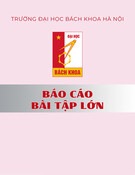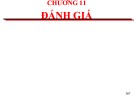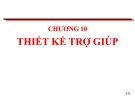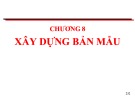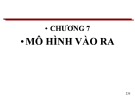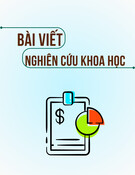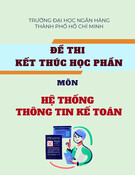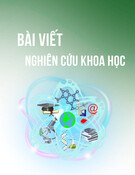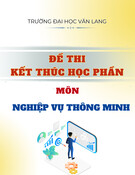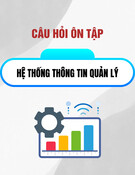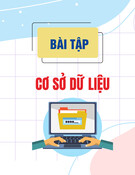
14
Chapter 14:
Designing the User Interface
Systems Analysis and Design in a Changing
World, 3rd Edition
14
Systems Analysis and Design in a Changing World, 3rd Edition 2
Learning Objectives
Understand the difference between user
interfaces and system interfaces
Explain why the user interface is the system to
the users
Discuss the importance of the three principles of
user-centered design
Describe the historical development of the field of
human-computer interaction (HCI)
14
Systems Analysis and Design in a Changing World, 3rd Edition 3
Learning Objectives (continued)
Describe the three metaphors of human-
computer interaction
Discuss how visibility and affordance affect
usability
Apply the eight golden rules of dialog design
when designing the user interface
List the key principles used in Web design
Define the overall system structure as a menu
hierarchy
14
Systems Analysis and Design in a Changing World, 3rd Edition 4
Learning Objectives (continued)
Write user-computer interaction scenarios as
dialogs
Create storyboards to show the sequence of
forms used in a dialog
Use UML class diagrams and sequence
diagrams to document dialog designs
Design windows forms and browser forms that
are used to implement a dialog
14
Systems Analysis and Design in a Changing World, 3rd Edition 5
Overview
User interfaces handle input and output that
involve a system user directly
Focus on interaction between user and computer,
called human-computer interaction (HCI)
Metaphors to describe the user interface
Usability and Web-based development guidelines
Approaches to documenting dialog designs,
including UML diagrams from OO approach
14
Systems Analysis and Design in a Changing World, 3rd Edition 6
Identifying and Classifying
Inputs and Outputs
Identified by analyst when defining system scope
Requirements model produced during analysis
Event table includes trigger to each external event
Triggers represent inputs
Outputs are shown as responses to events

14
Systems Analysis and Design in a Changing World, 3rd Edition 7
Traditional and OO Approaches to Inputs
and Outputs
Traditional approach to inputs and outputs
Shown as data flows on context diagram, data flow
diagram (DFD) fragments, and detailed DFDs
OO approach to inputs and outputs
Defined by message entering or leaving system
Included in event table as triggers and responses
Actors provide inputs for many use cases
Use cases provide outputs to actors
14
Systems Analysis and Design in a Changing World, 3rd Edition 8
User versus System Interface
System interfaces: I/O requiring minimal human
interaction
User interfaces:
I/O requiring human interaction
User interface is everything end user comes into
contact with while using the system
To the user, the interface is the system
Analyst designs system interfaces separate from
user interfaces
Requires different expertise and technology
14
Systems Analysis and Design in a Changing World, 3rd Edition 9
Understanding the User Interface
Physical Aspects of the User Interface
Devices touched by user, manuals,
documentation, and forms
Perceptual Aspects of the User Interface
Everything else user sees, hears, or touches such
as screen objects, menus, and buttons
Conceptual Aspects of the User Interface
What user knows about system and logical
function of system
14
Systems Analysis and Design in a Changing World, 3rd Edition 10
Aspects of the User Interface
14
Systems Analysis and Design in a Changing World, 3rd Edition 11
User-Centered Design
Focus early on the users and their work by
focusing on requirements
Usability - system is easy to learn and use
Iterative development keeps focus on user
Continual return to user requirements and
evaluate system after each iteration
Human-computer interaction (HCI)
Study of end users and interaction with computers
Human factors engineering (ergonomics)
14
Systems Analysis and Design in a Changing World, 3rd Edition 12
Fields Contributing to the Study of HCI

14
Systems Analysis and Design in a Changing World, 3rd Edition 13
Metaphors for
Human-Computer Interaction
Direct manipulation metaphor
User interacts with objects on display screen
Document metaphor
Computer is involved with browsing and entering
data on electronic documents
WWW, hypertext, and hypermedia
Dialog metaphor
Much like carrying on a conversation
14
Systems Analysis and Design in a Changing World, 3rd Edition 14
Desktop Metaphor Based on Direct
Manipulation Shown on Display Screen
14
Systems Analysis and Design in a Changing World, 3rd Edition 15
Desktop Metaphor Shown as
Hypermedia in a Web Browser
14
Systems Analysis and Design in a Changing World, 3rd Edition 16
Dialog Metaphor Expresses the
Messaging Concept
14
Systems Analysis and Design in a Changing World, 3rd Edition 17
Guidelines for Designing
User Interfaces
Visibility
All controls should be visible
Provide immediate feedback to indicate control is
responding
Affordance
Appearance of control should suggest its
functionality –purpose for which it is used
System developers should use published
interface design standards and guidelines
14
Systems Analysis and Design in a Changing World, 3rd Edition 18
Eight Golden Rules for
Interactive Interface Design

14
Systems Analysis and Design in a Changing World, 3rd Edition 19
Documenting Dialog Designs
Done simultaneously with other system activities
Based on inputs and outputs requiring user
interaction
Used to define menu hierarchy
Allows user to navigate to each dialog
Provides overall system structure
Storyboards, prototypes, and UML diagrams
14
Systems Analysis and Design in a Changing World, 3rd Edition 20
Overall Menu Hierarchy Design
14
Systems Analysis and Design in a Changing World, 3rd Edition 21
Dialogs and Storyboards
Many methods exist for documenting dialogs
Written descriptions following flow of events
Narratives
Sketches of screens
Storyboarding –showing sequence of sketches of
display screen during a dialog
14
Systems Analysis and Design in a Changing World, 3rd Edition 22
Storyboard for Downtown Videos
14
Systems Analysis and Design in a Changing World, 3rd Edition 23
Dialog Documentation with UML Diagrams
OO approach provides UML diagrams
Use case descriptions
List of steps followed as system and user interact
Activity diagrams
Document dialog between user and computer for a
use case
System sequence diagrams (SSD)
Actor (a user) sends messages to system
System returns information in form of messages
14
Systems Analysis and Design in a Changing World, 3rd Edition 24
Sequence Diagram for the RMO
Look Up Item Availability dialog

14
Systems Analysis and Design in a Changing World, 3rd Edition 25
Class Diagram Showing Interface Classes
Making up ProductQueryForm
14
Systems Analysis and Design in a Changing World, 3rd Edition 26
Sequence Diagram Showing Specific
Interface Objects
14
Systems Analysis and Design in a Changing World, 3rd Edition 27
Guidelines for Designing
Windows and Browser Forms
Each dialog might require several window forms
Standard forms are widely available
Windows: Visual Basic, C++, Java
Browser: HTML, VB-Script, JavaScript, ASP or
Java servlets
Implementation
Identify objectives of form and associated data
fields
Construct form with prototyping tools
14
Systems Analysis and Design in a Changing World, 3rd Edition 28
Forms Design Issues
Form layout and formatting consistency
Headings, labels, logos
Font sizes, highlighting, colors
Order of data-entry fields and buttons
Data keying and data entry (use standard control)
Text boxes, list boxes, combo boxes, etc.
Navigation and support controls
Help support: tutorials, indexed, context-sensitive
14
Systems Analysis and Design in a Changing World, 3rd Edition 29
Guidelines for Designing Web Sites
Draw from guidelines and rules for designing
Windows forms and browser forms
Website uses:
Corporate communication
Customer information and service
Sales, distribution, and marketing
Must work seamlessly with customers 24/7
14
Systems Analysis and Design in a Changing World, 3rd Edition 30
Dialog Design for RMO Phone-Order
Steps in dialog models
1. Record customer information
2. Create new order
3. Record transaction details
4. Produce order confirmation
Traditional approach –produce structure chart
OO approach –expand SSD to include forms

